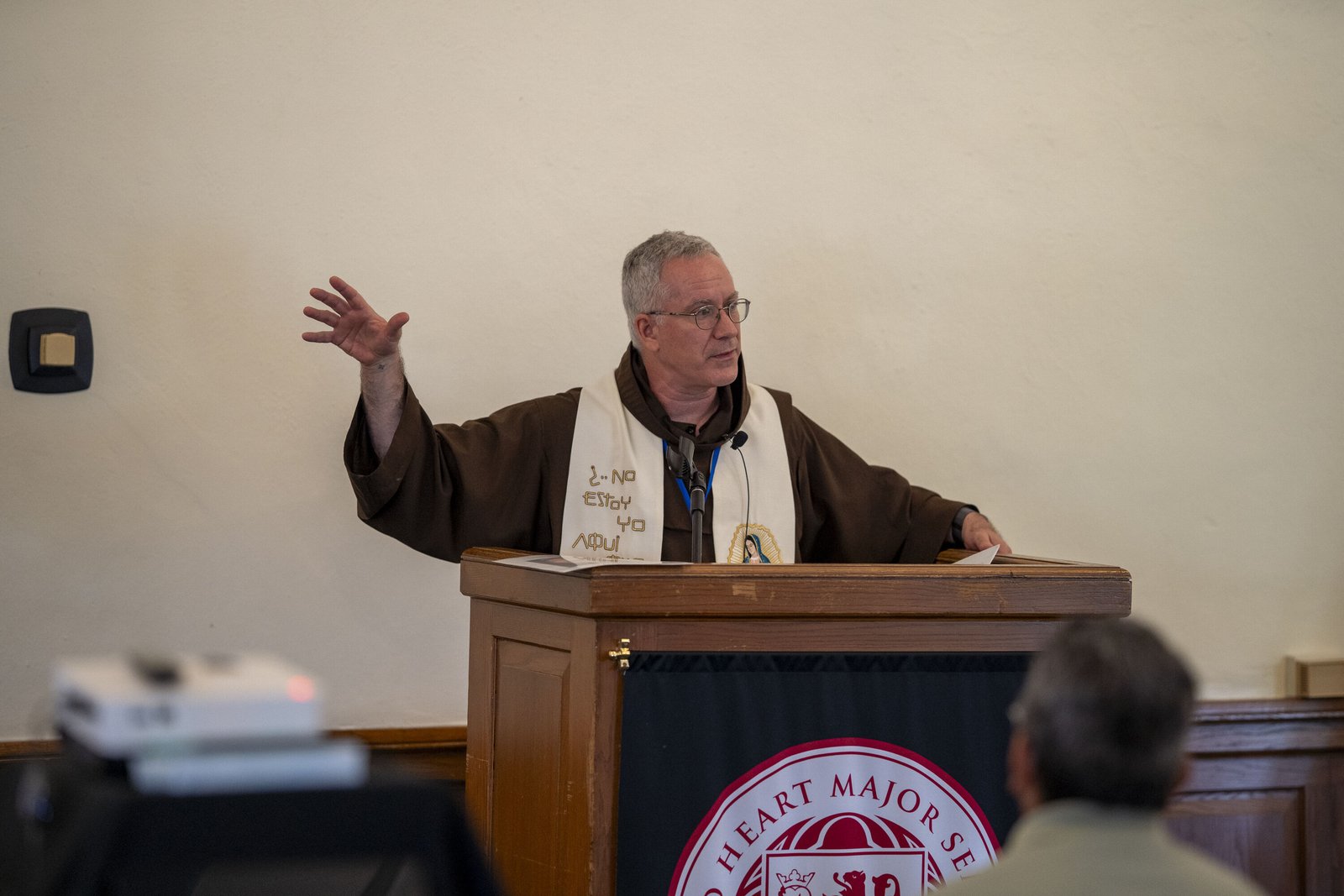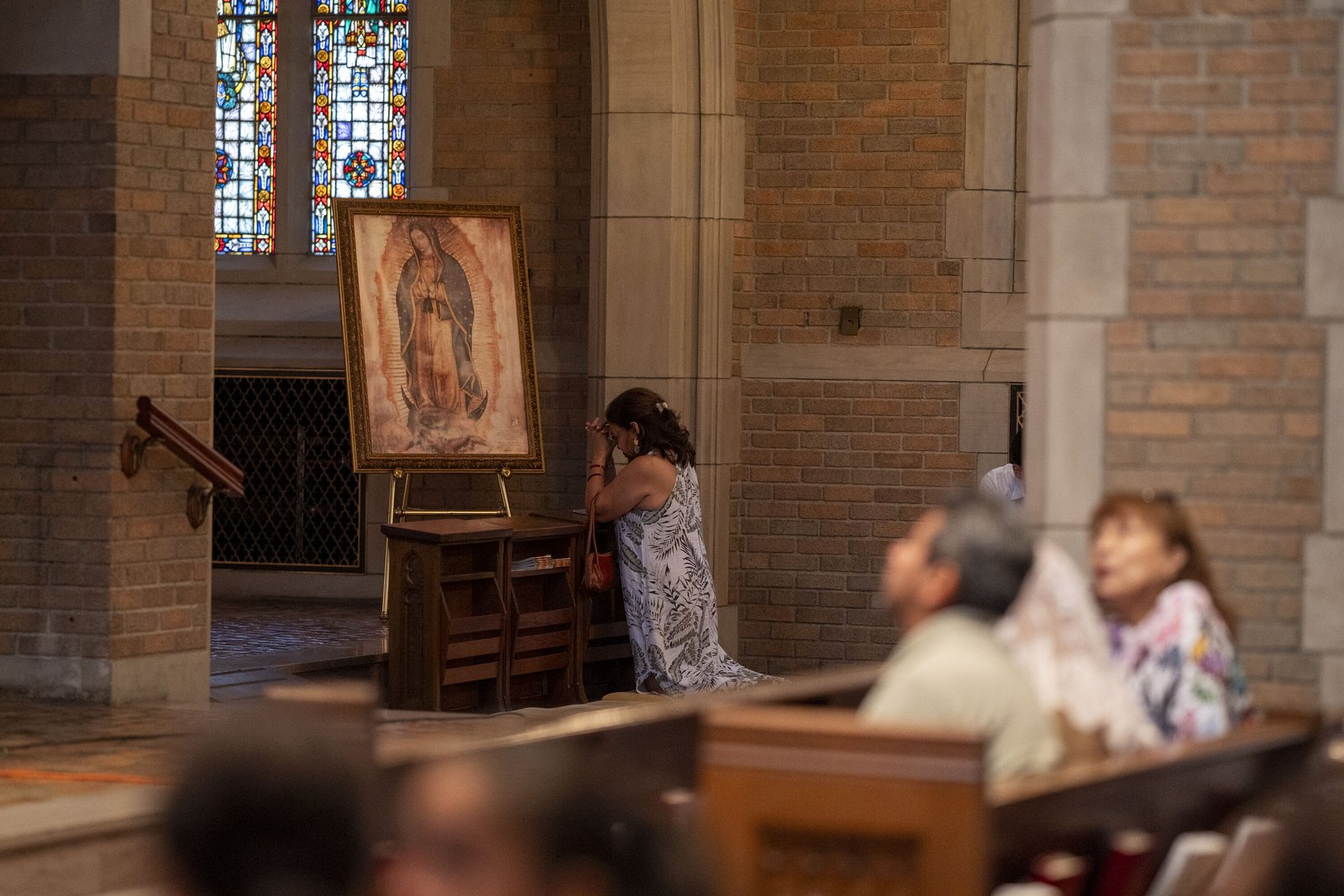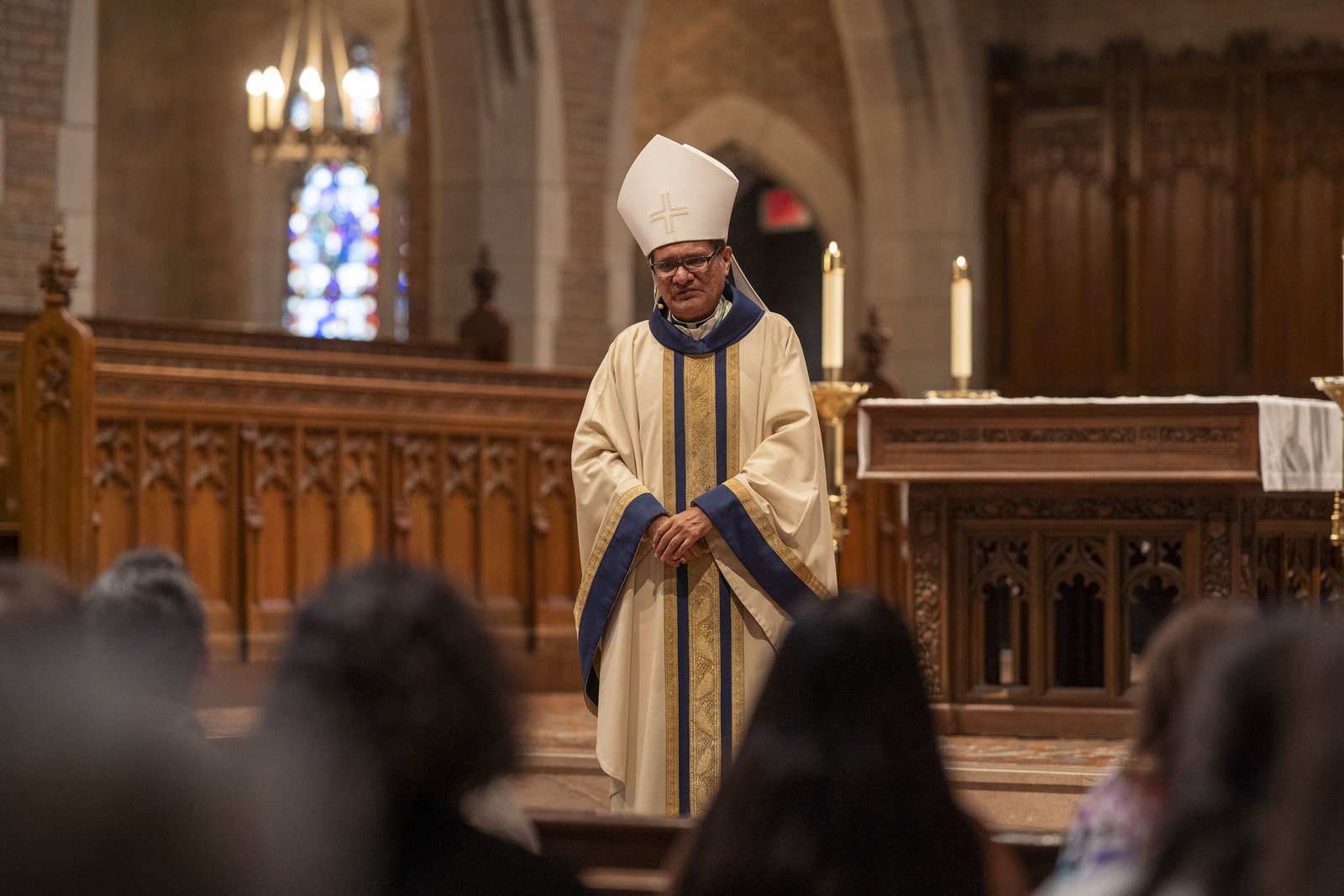‘Our Lady is for everybody,’ conference organizers say in effort to spread devotion common in Mexican families, communities
DETROIT — Mary, under the title of Our Lady of Guadalupe, is the empress of all the Americas, and that’s something the Federation of Associations of Our Lady of Guadalupe wants to emphasize.
The federation, composed of 12 groups across the Archdiocese of Detroit consecrated to Our Lady of Guadalupe, partnered with the archdiocese’s Office of Hispanic Ministry to organize the 2025 Our Lady of Guadalupe Conference at Sacred Heart Major Seminary in Detroit on Aug. 16.
Don't miss another story
Did you know you can get Detroit Catholic's latest daily or weekly articles delivered to your inbox? It's easy and free to sign up.
More than 300 people attended the bilingual conference to hear talks and testimonies about Our Lady of Guadalupe, and how her saving message to St. Juan Diego brought in millions of converts to the Church in the former Aztec Empire, and continues to encourage the people to look to her Son, explained Conchis Kargetta, president of The Federation of Associations of Our Lady of Guadalupe.
“We want people leaving this conference with a sense of unity across parishes and cultures across the archdiocese,” Kargetta said. “(Our Lady’s) original message to St. Juan Diego was to join our cultures.
“Our Lady of Guadalupe is not just for Mexicans or Mexican-Americans, but for all Catholics,” Kargetta added. “Our Lady of Guadalupe is Our Blessed Mother, and she is for everyone is every single corner of the world.”
This was the seventh conference the association has organized, but the first which offered lectures in English and Spanish.
“Our Lady is the patroness of all America, along with being patroness of the unborn, so we wanted to do a bilingual conference this year to invite more people to hear Our Lady’s message,” Kargetta said. “Our Lady’s message is so important today because she shows us how to unite different cultures with the Aztecs and the Spanish, and how her Son is the savior for everybody.”
Fr. Alex Kratz, OFM, spiritual director of Terra Sancta Ministries in Pontiac, presented on how God worked through St. Juan Diego, an Aztec peasant who was baptized by the Franciscans to bring Our Lady’s message to the people of Mexico.

“Mary insisted it was Juan Diego, for all of his shortcomings and faults that he himself admitted, to bring the message,” Fr. Kratz said. “Juan Diego is part of the message. It’s not just the tilma. It’s not just the apparitions. It’s Juan Diego.”
Fr. Kratz spoke about the context of Mary’s apparition to Juan Diego on Tepeyac Hill in Mexico in 1531, 12 years after the arrival of the Spanish conquistador Hernán Cortés and 10 years after the fall of the Aztec Empire.
Before the Spaniards arrived, the Aztecs would make human sacrifices, believing these sacrifices made the sun rise the next day. After the Spaniards abolished the practice, and the sun still rose, Fr. Kratz explained that most of the former Aztec society was crushed, and their entire belief system had been upended.
Our Lady’s appearance to Juan Diego on Tepeyac Hill brought hope in the true faith to the peoples of what is now Mexico.
“She is coming to a culture of death, where the greatest human sacrifices we have ever seen happened, where they sacrificed 80,000 people within four days,” Fr. Kratz said. "She comes to bring her Son’s message to these people. She restores a culture with life and love. That’s why she is the patroness of the pro-life movement. And she goes to the humblest.”
It’s also worth noting, Fr. Kratz said, that Our Lady asked Juan Diego to go to Archbishop Juan de Zumárraga of Mexico City and speak about his revelations, and even after the archbishop didn’t believe him, to go to him again, bringing roses, even though it was winter in Mexico.

“Mary is working through the authority of the Church, and that’s a good test because in every Marian apparition, you see there is a sense of obedience and loyal submission, even if the bishops or priests don’t get it right away or are even wrong.
“Jesus Christ is able to overcome those difficulties,” Fr. Kratz added. “Do you think the Holy Mother of God, do you think Jesus Christ, isn’t capable of working through the challenges and fixing things?” Fr. Kratz said. “But there is something going on here. Mary is testing Juan Diego. She asks him to be faithful, to keep giving witness to these challenges.”
Other talks featured the cultural significance of Our Lady of Guadalupe, particularly in Mexican and Mexican-American households.
Daniel Magarino, a youth minister at the Basilica of Ste. Anne de Detroit, has been a member of the Federation of Our Lady of Guadalupe since 2013 and spoke of how Our Lady of Guadalupe is ubiquitous in Mexican culture.
“Our Lady is pretty much ingrained in Mexican culture, so everybody knows Our Lady a little bit in kind. Ever since you were born, she has always been there,” Magarino said. “Not everyone in Mexico will have a cross or crucifix in their home, but everyone has an image of Our Lady.”
Magarino said the feast of Our Lady of Guadalupe, Dec. 12, is the day Mass is most attended in Mexico, even more so than Christmas or Easter, with thousands packing the Basilica of Our Lady of Guadalupe and the plaza in Mexico City for her feast day celebrations.

“All throughout Mexico, the different states have different months of the year reserved for people to go on pilgrimages once a year to the basilica,” Magarino said. “That is how much Our Lady means to us. But for families up here, who can’t go to Mexico every year, they have images and make sure to go to Las Mañanitas, the morning Mass on Dec. 12, to sing to Mary. Devotion to Our Lady of Guadalupe is a way to have a mother with us at all times, even when our families are separated.”
Detroit Auxiliary Bishop Arturo Cepeda celebrated Mass, with retired Detroit Auxiliary Bishop Donald F. Hanchon and Fr. Kratz concelebrating.
During his homily, Bishop Cepeda said Our Lady’s appearance to St. Juan Diego is a call to go out and tell the world the good news about Jesus Christ.
“We are missionary disciples of Our Lord, and we need to share the good news; that is what Our Lady told Juan Diego, and that is what she is teaching us,” Bishop Cepeda said. “In our first reading today, we hear the people of Israel are about to enter the promised land with a desire to serve God for what He has done in their midst. And right there, He makes a vow with His people. Why? Because they have the desire to serve Him.
“Today, what is our desire? How are we to serve Him?” Bishop Cepeda asked. “To be on mission for God.”
To become a missionary for God, Bishop Cepeda said to look to Our Lady on Tepeyac Hill, whose calming presence was all she needed to communicate to Juan Diego that she was his mother.
“The most effective way to give the proclamation of the good news begins with a smile and a willingness to say, ‘yes,’” Bishop Cepeda said. “And when your neighbors, your families see the grace you have in your life, when they see that smile on your face, they will want to have that. They will want to serve the Lord.”
Copy Permalink
Hispanic ministry












